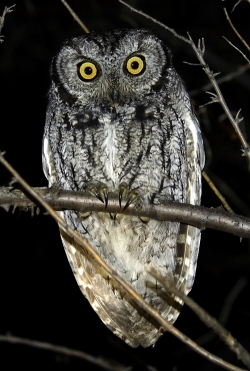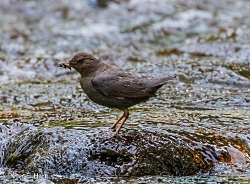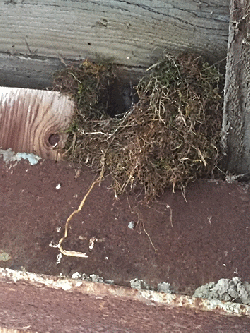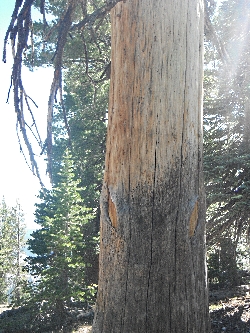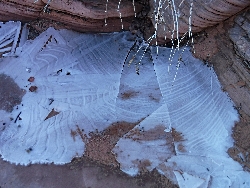
Bryce Canyon National Park
Courtesy US National Park Service
And found on Wikipedia
At first, it was only the eyes I could track—deep, watery, and of a midnight hue, darker even than the feathery blanket they peered through. I didn’t respond quickly enough, I suppose. The raven blinked first, hopped toward the cold charcoal of last night’s fire and scooped a piece into his beak—not intending to eat it I’m sure; there was no tilting of the head as to swallow it. And after the first unpalatable bit was cast aside, another was scooped and cast in the same fashion. Then another. Four or five times before I realized what the raven wanted—my oatmeal, of course. As I turned back to my stove, there came the sound again, an ‘Urp!’ and a click of the beak.
The languages of birds in general are vastly complex and nuanced. And the language of ravens is supreme among them. In the unassuming journal Psychology Today, Avian Einsteins blogger and bird author John Marzluff dissects the reasons why. “A complex social lifestyle, long lifespan, and songbird brain provide the motive and machinery a raven needs to remain the most eloquent of avian orators,” Marzluff explains. The clucks, trills, haaas, and quorks common among all ravens are, in and of themselves, amazingly contextual and referential, used in varying sequences and settings to convey different meanings. And according to Marzluff, “New, useful, and intriguing noises can be memorized…and imitated as near perfect renditions,” to be “incorporated into a growing and individual repertoire.” This capacity for continued song learning not only makes raven language one of the most complex in the Animal Kingdom, but it also allows them to engage us humans.
My raven had given up scattering charcoal chips across the sand and had taken to watching me spoon oatmeal into my mouth as I stared back at him. Sat atop my cooler, hunched against the cold, January wind blowing up the canyon, I must not have been a menacing sight to the raven. Every few seconds, it hopped several inches forward toward me and clicked its beak, just as it had done when we first met. Then came the ‘Urp!’ again.
I would relay this experience several weeks later to a colleague and teacher of avian ecology. “It’s a begging behavior,” he would tell me. I was starting to figure this out for myself that morning—however late. I could tell the raven was getting frustrated with me, my relative intelligence coming into question within those midnight black eyes.
Our eyes kept finding each other. Only then did the ‘Urps’ and clicks stop. I was clearly not the first of its human encounters, but this was the first acquaintance I’d ever formally made with a raven. It was both thrilling and unsettling. I thought of Poe, shuddered, and looked away, back to my breakfast which was finally getting cold. I didn’t look at the raven anymore.
He left in disgust, I think, with a parting scoff. I turned at the gesture’s remarkable humanity, a familiar emotion translated between species. And I swear, as he banked into the river bend, he turned his head to glare back at me with those watery midnight eyes.
I’m Josh Boling, and I’m Wild About Utah.
Credits:
Photos: Courtesy US FWS, US NPS
Sound: Courtesy ESA and Popular Culture via YouTube
Text: Josh Boling, 2017, Bridgerland Audubon Society
Sources & Additional Reading
Raven Sounds:
- Max Ushakov, A huge raven making weird sounds in front of a crowd at the Tower of London., YouTube.com, July 14 2016, https://www.youtube.com/watch?v=l7jgjovK5lY
- ESL and Popular Culture, Raven ~ bird call, YouTube.com, Dec 12, 2012, https://www.youtube.com/watch?v=DDv_PlrBg14
Common Raven, Animals, National Geographic, https://www.nationalgeographic.com/animals/birds/c/common-raven/
Bird Note, How to Tell a Raven From a Crow, Oct 22, 2012, Audubon, https://www.audubon.org/news/how-tell-raven-crow
https://video.nationalgeographic.com/video/raven_intelligence
Ravens, Arches National Park, National Park Service – NPS.gov, Last updated: February 8, 2017, https://www.nps.gov/arch/learn/nature/ravens.htm
Common Raven, Zion National Park, National Park Service – NPS.gov, Last updated: January 31, 2016 https://www.nps.gov/zion/learn/nature/raven.htm
https://www.allaboutbirds.org/guide/Common_Raven/sounds” target=”newWindow”>https://www.allaboutbirds.org/guide/Common_Raven/sounds”>https://www.allaboutbirds.org/guide/Common_Raven/sounds
https://www.allaboutbirds.org/guide/Common_Raven/id
https://www.audubon.org/field-guide/bird/common-raven
https://www.audubon.org/news/how-tell-raven-crow
https://www.birdweb.org/birdweb/bird/common_raven
https://www.nationalgeographic.com/animals/birds/c/common-raven/
https://abcbirds.org/bird/common-raven/
https://scienceblogs.com/grrlscientist/2007/04/09/just-how-smart-are-ravens/

